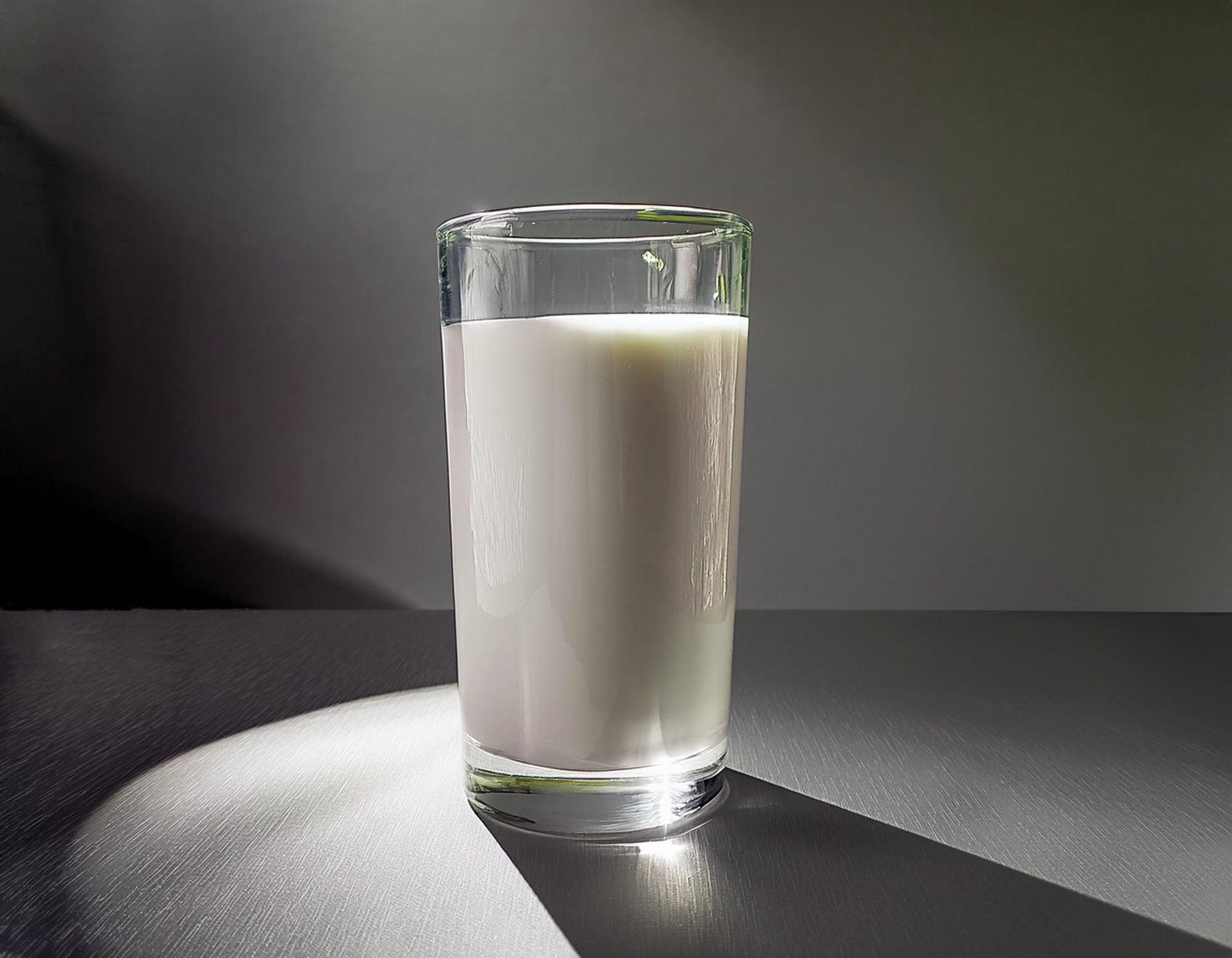Have you ever stopped to think about why milk is white? Uncover the intriguing science that makes milk uniquely colored in a way you’ve never imagined. Dive in to learn the fascinating truth behind this everyday mystery.

Have you ever poured a glass of milk and thought, ‘Why is milk white?’ It’s one of those ordinary mysteries that we seldom investigate. But the answer may surprise you. Stay tuned because what you’re about to learn will permanently transform your perspective on milk.
Unlocking the Mystery of Milk’s Color
Let’s delve into some science. When light passes through milk, it interacts with the fat molecules and proteins present in the liquid. These tiny particles scatter and reflect light in all directions. This scattering, known as the Tyndall effect, is the main reason milk looks white. The fat and protein molecules don’t absorb much light. Instead, they reflect almost everything, giving milk its unique white color.
But wait, there is more to it. Have you noticed that skim milk is less white than whole milk? Skim milk appears somewhat transparent due to its lower fat content, which reduces light scattering. Research found that milk with a more excellent fat content scatters more light, giving it a whiter look.
Now, let’s talk about the role of casein, one of milk’s main proteins. When casein molecules come together, they form structures called micelles. These micelles scatter light in all directions, making milk appear white. Think of how clouds scatter sunlight, making them look white. It’s a similar principle at work here.
Fat also plays a crucial role. Milk contains fat globules large enough to scatter light, contributing to its white appearance. Interestingly, the higher the fat content, the creamier and whiter the milk appears. This is why whole milk looks whiter than skim milk.
The Magic Behind Homogenization: Why Milk Stays Smooth and White
Homogenization is a process that breaks down fat molecules in milk, allowing them to stay mixed rather than separate. This process also helps to scatter light evenly, resulting in a consistent white color. Scientists believe this process is essential for milk’s smooth, even appearance. According to research published in the Journal of Agricultural and Food Chemistry, homogenization significantly reduces the size of fat globules, resulting in a more consistent and uniform product. The result? The familiar white color we all know and love.
But why do we need this? If you’ve ever consumed non-homogenized milk, you may have seen a layer of cream rising to the surface. Milk naturally separates into fat and liquid. Homogenization avoids this by pushing milk through tiny holes under high pressure, breaking down the fat molecules, and blending them smoothly into the liquid.
Furthermore, homogenized milk tastes creamier and more consistent, making it popular in families and industrial food manufacturing. Isn’t it funny how a technique meant to blend components can profoundly influence how we perceive milk?
Fun fact: Did you know other foods have the same dispersion effect? Whipped cream and yogurt, for example, seem white because fat and protein molecules scatter light.
Milk: America’s Favorite Beverage?
Have you ever wondered how popular milk is? According to the National Dairy Council, over 90% of U.S. families consume milk daily. Do you also know that dairy products comprise about 14% of the typical American’s daily protein intake? And get this: the typical American drinks 18 gallons of milk yearly.
The Bottom Line
The next time you pour yourself a milk drink, you will understand why it is white. It’s all about how light interacts with milk’s proteins and lipids. Isn’t it interesting that something so basic can have such a complicated explanation? Now, dazzle your pals with your newly acquired knowledge!
Key Takeaways
- The whiteness of milk is due to light interacting with fat molecules and proteins through the Tyndall effect.
- Skim milk appears less white because it has a lower fat content.
- Casein proteins form micelles that scatter light in all directions, contributing to milk’s white color.
- Homogenization breaks down fat molecules to maintain consistent color and texture.
- Over 90% of American families consume milk daily.
- Dairy products provide 14% of the daily recommended protein intake in the US.
Summary
Have you ever wondered why milk is white? It’s all due to the Tyndall effect, where light interacts with fat molecules and proteins. Skim milk appears less white due to lower fat content, while higher fat milk scatters more light, making it whiter. Key protein casein forms micelles that scatter light in all directions. Milk is a staple in American families, with over 90% consuming it daily, and dairy products provide 14% of the daily protein intake. Stay tuned as we unlock more mysteries behind this everyday wonder.
Learn more:
- The Secret Raw Milk Cure Hidden by Big Pharma
- Hot Chicks Drink Whole Milk: What This Means for the Dairy Market
- The Power of Why in Dairy Farm Management: Unlocking Dairy Success
 Join the Revolution!
Join the Revolution!
Bullvine Daily is your essential e-zine for staying ahead in the dairy industry. With over 30,000 subscribers, we bring you the week’s top news, helping you manage tasks efficiently. Stay informed about milk production, tech adoption, and more, so you can concentrate on your dairy operations.







 Join the Revolution!
Join the Revolution!




